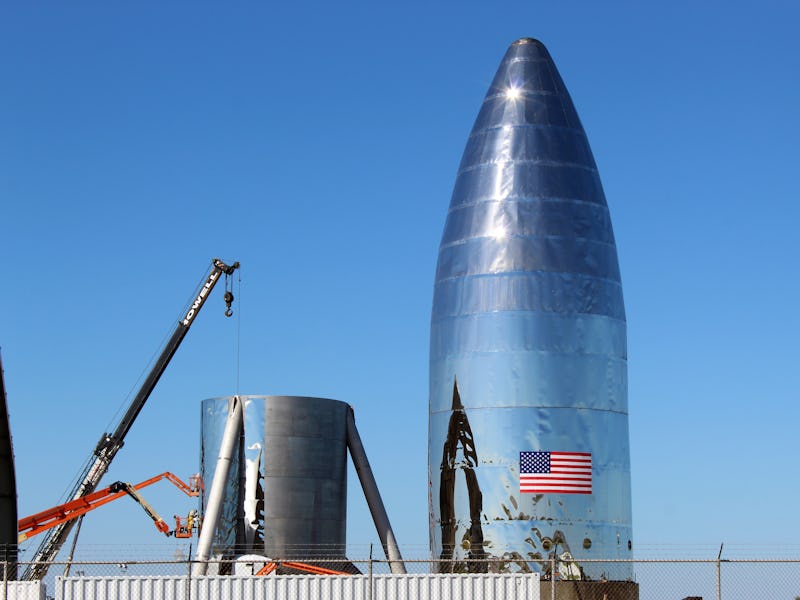SpaceX Starship: why Elon Musk is not worried about early failures
The company is continuing in its mission to send humans to Mars.

An early test Starship exploded? It's not a big deal, SpaceX CEO Elon Musk explained Thursday, as he shed light on the development process behind the ship designed to send humans to Mars.
Writing on his Twitter page, where he has over 33 million Twitter followers, Musk explained how the company is working to build up production on the Starship rocket. The ship is expected to offer a fully-reusable design that makes it suitable for landing humans on Mars, refueling using the planet's resources, and returning home or venturing out further. The ambitious project has had its tumbles, as spotted in video footage, but Musk explained he was not massively concerned about these early issues:
Production is by *far* the hard part. That’s why I’m not super worried about early Starship failures. Initial serial numbers are suboptimal, so would be lawn ornaments if they survived. That said, as lawn ornaments go, they’re pretty sweet …
The comments speak to one of the most visible issues around the Starship project's early stages. Musk unveiled the first prototype "Mk.1" in September 2019, but video footage two months later showed that ship's top blowing off during a pressure test. SpaceX destroyed a second prototype "SN1" in February 2020, launching into the air during a super-cold cryo proof test. A third prototype "SN3" was destroyed this month, crumpling and collapsing during a similar test to the first two.
"Where’s Flextape when you need it!?" Musk joked on Twitter after the "SN1" failure. But Musk revealed in a March Ars Technica profile that he was unaware of a welding issue near the ship's engines. This issue caused the welds to burst under pressure. Musk requested that employees flag issues with him directly in future, rather than flagging them through management.
Musk has faced his fair share of headaches from production before. When his other firm Tesla started producing the mass-market Model 3 in July 2017, it expected to produce 5,000 per week by the end of that year. Musk ended up sleeping at the factory and going through "production hell," only to reach the target by the following summer – an episode that highlights the difficulties in predicting the early stages of production.
The Starship will also need to ramp up production to meet its own goals. Musk is aiming to build 1,000 ships to reach his goal of making life multi-planetary. In June 2019 the team was aiming to produce a new Raptor engine every 12 hours by the end of the year, but Musk noted this week that the next Raptor engine will be "SN26." Each of those 1,000 Starships could require up to 43 engines each, meaning a potential total of 43,000 engines.
The Inverse analysis
The Starship's test failures have not gone unnoticed. Its large size and open-air tests mean camera crews have been able to capture footage of these failures as they occur. Each video has led to thousands of views, complete with comments from concerned onlookers.
Test failures are to be expected from any project of this magnitude, and a better metric to judge the project would be on its development goals. Musk claimed in 2018 that his goal was to host "hop tests" with the Starship in 2019, a goal that it sort-of met by using a smaller ship. SpaceX successfully launched the Starhopper in August 2019, a miniaturized version of the Starship that flew 150 meters into the air. The team's next goal, as outlined in September 2019, was to host an orbital flight within six months – a figure that Musk said was "accurate to within a few months."
With work on "SN4" almost done according to Musk, and "either SN5 or SN6" receiving the flaps that would help it fly higher, it seems SpaceX is continuing to iterate on the design until it irons out the kinks.